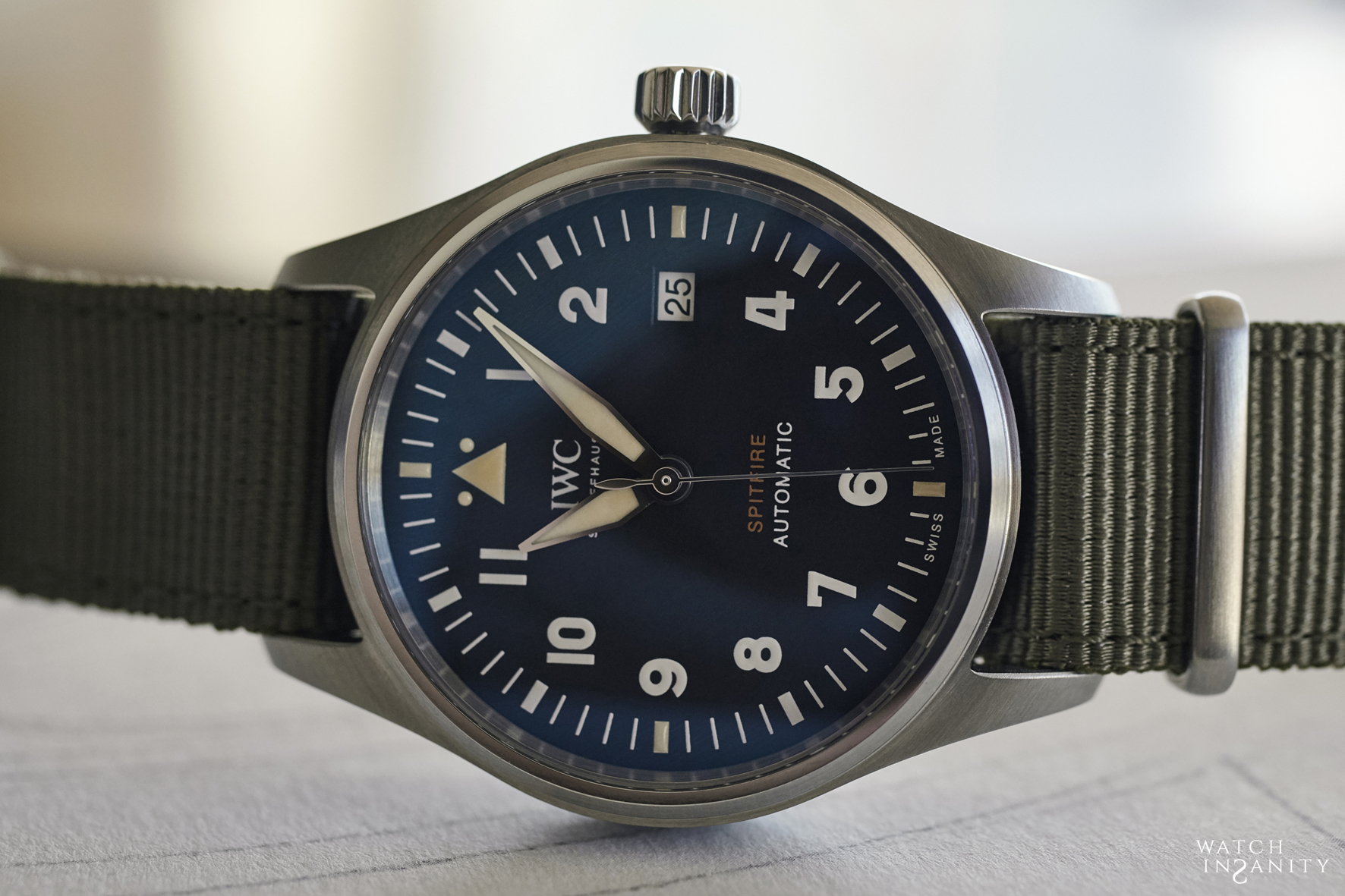IWC Pilot’s Spitfire: The Longest Flight
19 March 2019IWC SPITFIRE – A NEW PILOT’S WATCH INSPIRED BY THE HISTORY OF AVIATION
THE LONGEST FLIGHT
“Silver Spitfire – The Longest Flight:” this is the name of the project thanks to which Steve Boultbee Brooks and Matt Jones hope to make aviation history. Next summer, the two British pilots will undertake the first round-the-world flight aboard a Spitfire, the agile and powerful British fighter aircraft. Boultbee Brooks and Jones, founders of the Boultbee Flight Academy in Goodwood, southern England – the only officially recognised Spitfire flying academy in the world – are aiming to fly more than 43,000 kilometres on this legendary aircraft which, with its limited range of 750 kilometres, was not designed for such an undertaking.
Steve Boultbee Brooks is no stranger to record-breaking feats. He was the first pilot to fly a helicopter from the North Pole to the South Pole. It took two helicopters and about 100 flight stops, and the feat took more than two years to perform.
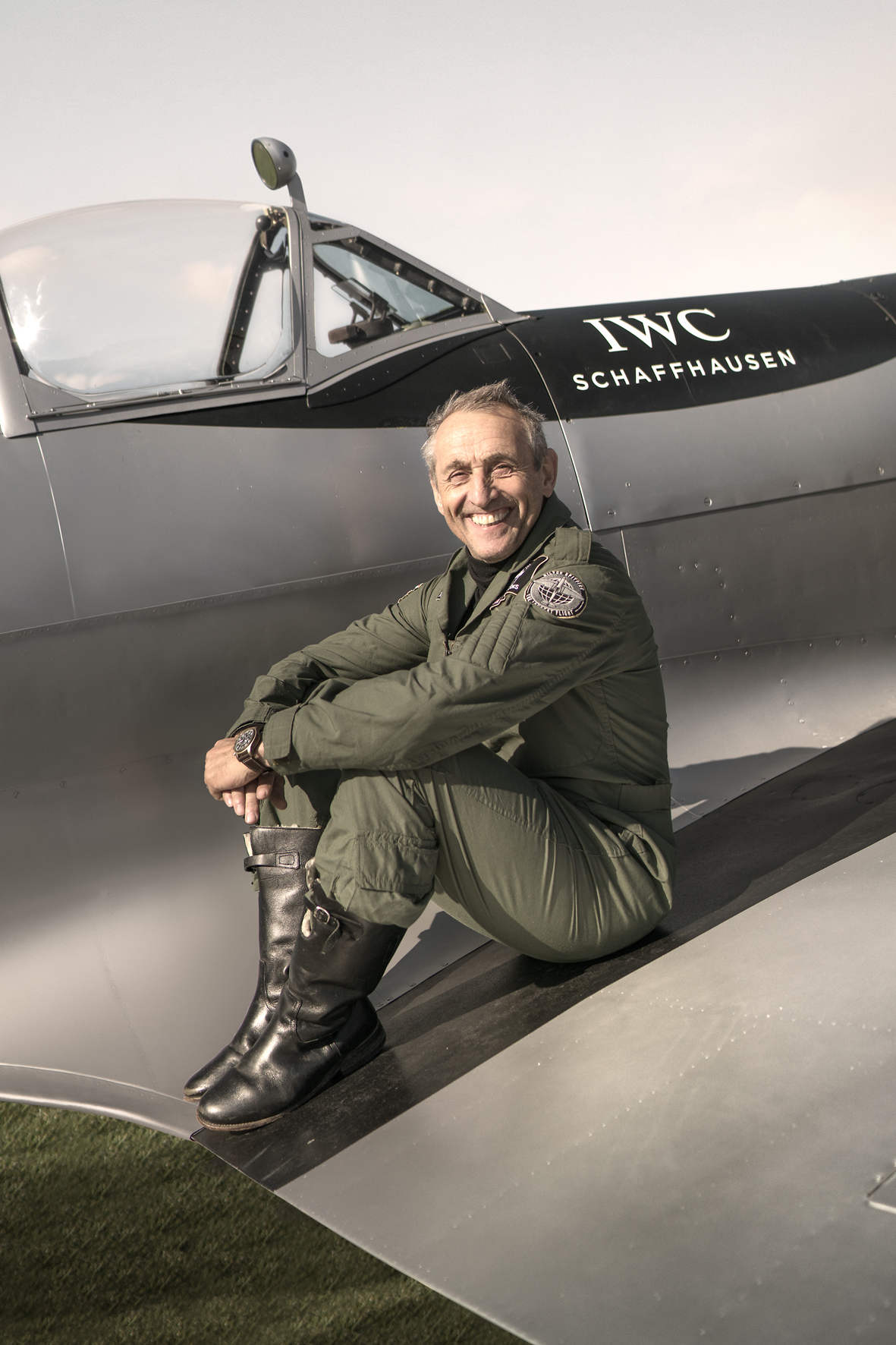
Boultbee Brooks and Jones have found the “Silver Spitfire” with which they will face the adventure in a museum. Built in 1943 at Castle Bromwich, it has carried out more than 50 flights during its period of activity. The aircraft was disassembled into individual parts for restoration, which lasted two years.
The flight route has not yet been finalised. The details will vary depending on weather conditions. What’s certain is that the enterprise will start in August from Goodwood and will be divided into 100 stops in Iceland, Canada and then the United States to allow the crew to take advantage of the relatively mild weather conditions of the Arctic. It will then fly over Alaska and Russia en route to Japan and Southeast Asia, before heading to India. The Silver Spitfire will then return to Europe via the Middle East.
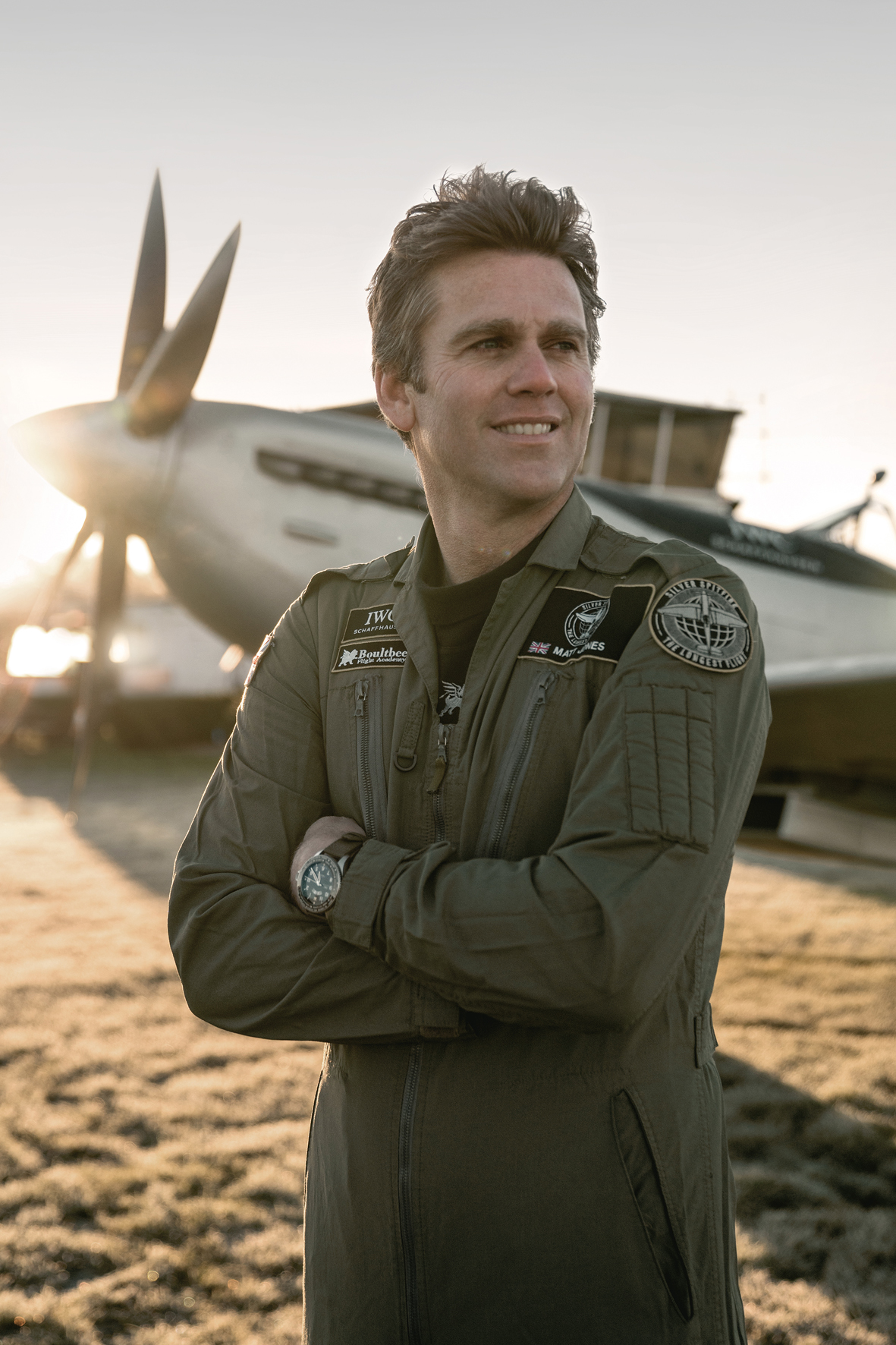
Since it does not have spare tanks, the Spitfire will have to refuel every 750 kilometres. In addition to the right amount of fuel, original spare parts must also be available at each stop. Because of its age, the Spitfire requires an enormous amount of maintenance and will have to be serviced every 25 hours of flight.
THE SPITFIRE STORY
The British single engine fighter aircraft Spitfire is one of the most sophisticated developments in aviation history. The engineering path that lead to the development of the aircraft began in 1931 with a call for tenders from the British Ministry of Air which had plans to develop a state-of-the-art fighter aircraft with a flight speed of 400 kilometres per hour. Reginald J. Mitchell, chief engineer of the British aircraft manufacturer Supermarine, took up this enormous challenge and built an aircraft called “Type 224,” drawing on his experience in the construction of seaplanes. However, Mitchell’s monoplane, with its open cockpit, seagull wings and fixed carriage, did not meet the expectations of the British Air Ministry.

The engineer did not resign himself and developed a new project: a plane with retractable wheels and a covered cockpit. Mitchell thought of exploiting the enormous power of the Rolls-Royce Merlin engine, while keeping the plane easy to fly. With the Merlin engine as its beating heart, Mitchell and Canadian aerodynamics expert Beverley Shenstone developed the “Type 300,” with the main features of the aircraft that would go down in history as the Spitfire. In 1936, the first prototypes were built. From the very first test flights, pilots were impressed by the aeronautical capabilities of the “fire-breathing” aircraft.
After Mitchell’s death in 1937, his successor Joseph Smith continued developing the aircraft at Vickers Supermarine. By the end of production in 1948, more than 20,300 planes had been produced. To date, more Spitfire models have been built than any other aircraft in the world.
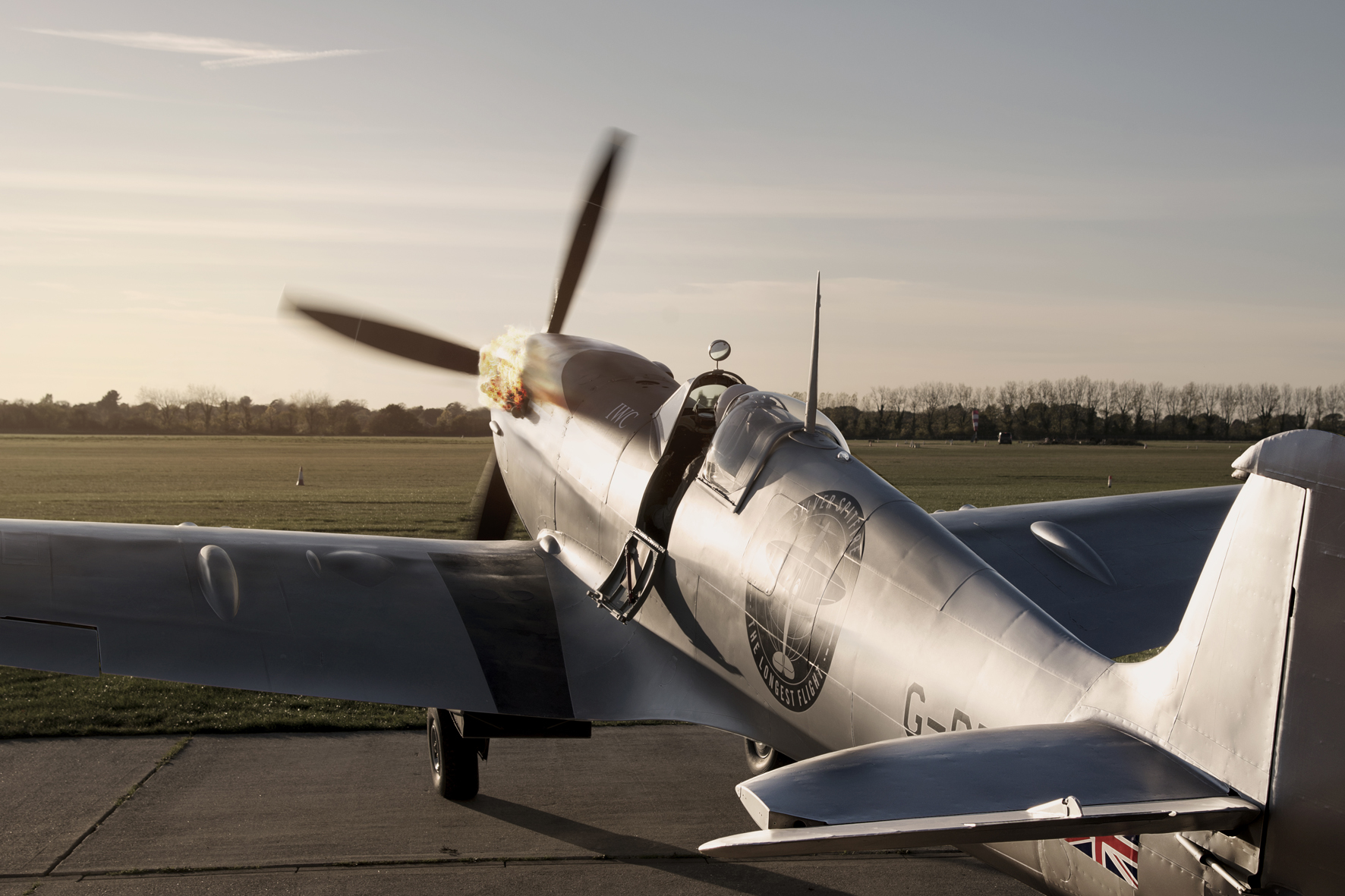
The fact that the Spit is so popular with pilots is due to its extraordinary maneuverability. Its secret: elliptical wings, which make it possible to exploit the flow of air optimally in any position, even at high speeds or in the event of sudden turns. In addition, the thin wing profile makes the aircraft easy to manoeuvre in any situation, even at a high speed.
IWC AND THE ROYAL AIR FORCE
The Mark 11 marks the connection between the watchmaker IWC Schaffhausen and the British Air Force, the Royal Air Force. The navigation watch was first produced in 1948 in Schaffhausen for the Royal Air Force. It has since then become a benchmark, not only in terms of technical functionality but also for its design, which has inspired the aesthetics of all modern IWC Pilot’s Watches.
The history of the Mark 11 is inextricably related to the history of navigation. For the crews of ships and, later, aircrafts, determining their exact position remained a huge challenge for many years.
After the Second World War, the Royal Air Force worked intensively – for the time – at developing new navigation systems, based for example on headlights or radars. At the time, however, beacons had a range of about 300 miles and a land radar was not able to transmit useful data across the sea.
The first navigation clocks used by the RAF were actually quite accurate, however, their aluminium or chrome-plated brass cases could not bear neither the salty air of the North Sea nor the hot, humid climate of Asia. The radar screens used to get closer to the target were another problem. They generated strong magnetic fields, which interfered with the movement of the clocks in the cockpit.
All these challenges prompted the RAF to develop a completely new navigation watch. The result is the Mark 11, developed by IWC’s engineers in 1948. The “Navigator’s Wrist Watch Mk. 11 – Stores Ref. 6B/346” was equipped with the chronometrically precise calibre 89. Another important feature was the effective protection against magnetic fields. Since the antimagnetic material commonly used at the time was subject to wear out, IWC engineers built a soft-iron cage, which dial was the upper part.
The front glass of the watches had a special protection to hold it in place in case of a sudden pressure drop inside the cockpit.
The Mark 11 was not only a benchmark for the technology used, but also for its aesthetics. During the time it was in service, the design of the navigation watch was continually improved. When it was introduced in 1949, it still bore the numbers “1” to “12” written on it, and the small rectangles at “3”, “6”, “9” and “12” were already made of luminescent material. In 1952, the number “12” was replaced by the characteristic triangle with a dot on both sides, which is now one of the signatures of IWC Pilot’s Watches.
THE NEW IWC SPITFIRE COLLECTION
Always closely connected to the world of aviation with its Pilot’s Watches line, IWC introduced a new line of timepieces at the SIHH in Geneva – a tribute to the engineering excellence of the legendary British fighter aircraft’s designers. All Spitfire watches are driven by IWC-manufactured calibres. The design is inspired by the essential lines of the Mark 11 instrument watch.
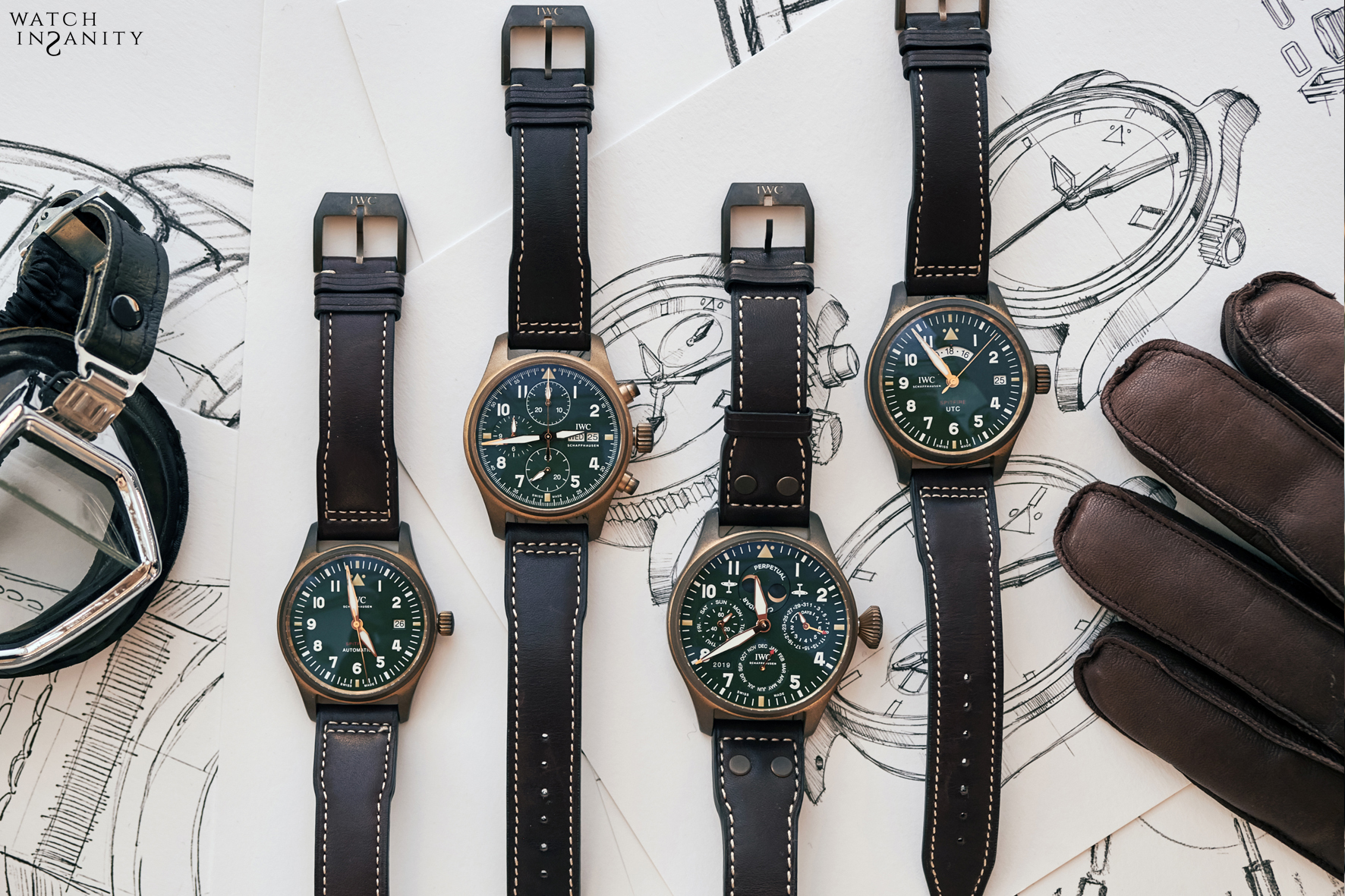
“Like the Spitfire, the eponymous IWC watch collection is a perfect combination of form and function. The design is inspired by the pure lines of the legendary Mark 11 navigation watch.
“This watch demonstrates our engineering expertise, because we have integrated prestigious IWC-manufactured calibres into all Spitfire models,” explains Christoph Grainger-Herr, CEO of IWC Schaffhausen.
The Spitfire line has two different designs in terms of aesthetics. “The colours of the watch, with its stainless steel case, black dial and green fabric strap, are reminiscent of the interior of a Spitfire. The bronze case, olive green dials and brown calfskin straps make the other models unique. Over time, the bronze develops a special patina. The Spitfire is engraved on the back, with a solid case back,” explains Creative Director Christian Knoop.
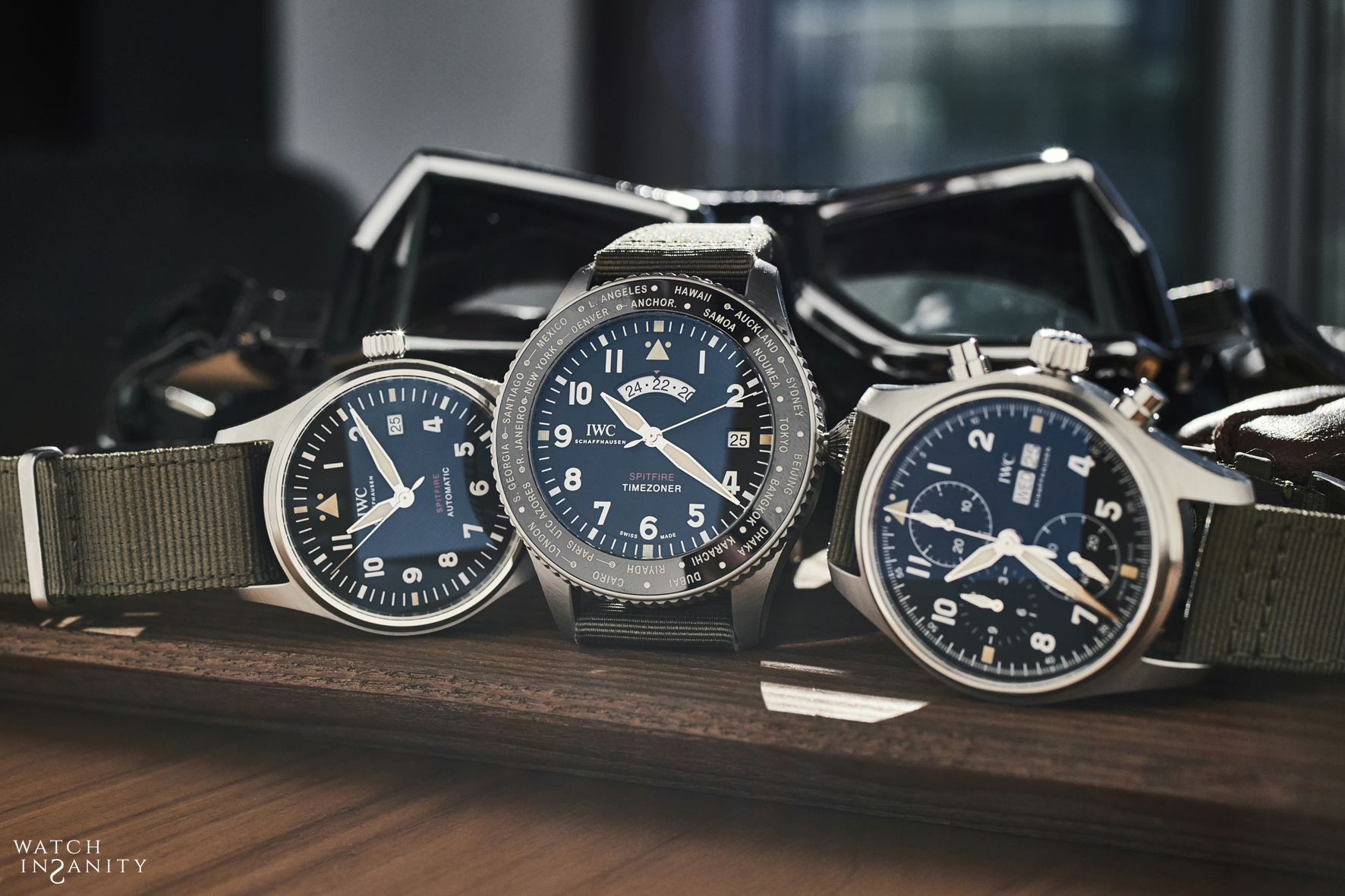
Describing the new models, the Big Pilot’s Watch Perpetual Calendar Spitfire (Ref. IW503601) features a perpetual calendar and is produced in a limited edition of 250 pieces. It has a bronze case, an olive green dial, golden hands, and a brown calfskin strap. The model includes the IWC-manufactured 52615 calibre with a seven-day power reserve. The robust components of the Pellaton winding system are made of wear-resistant ceramic. The perpetual calendar automatically recognises the different lengths of the months and leap years, and will run until 2100 without any correction. The dual moon display shows the moon in its correct position in the northern and southern hemispheres, and must be adjusted by one day every 577.5 years. The transparent sapphire crystal caseback allows you to admire the finely decorated IWC-manufactured calibre. (Price €.31.900)
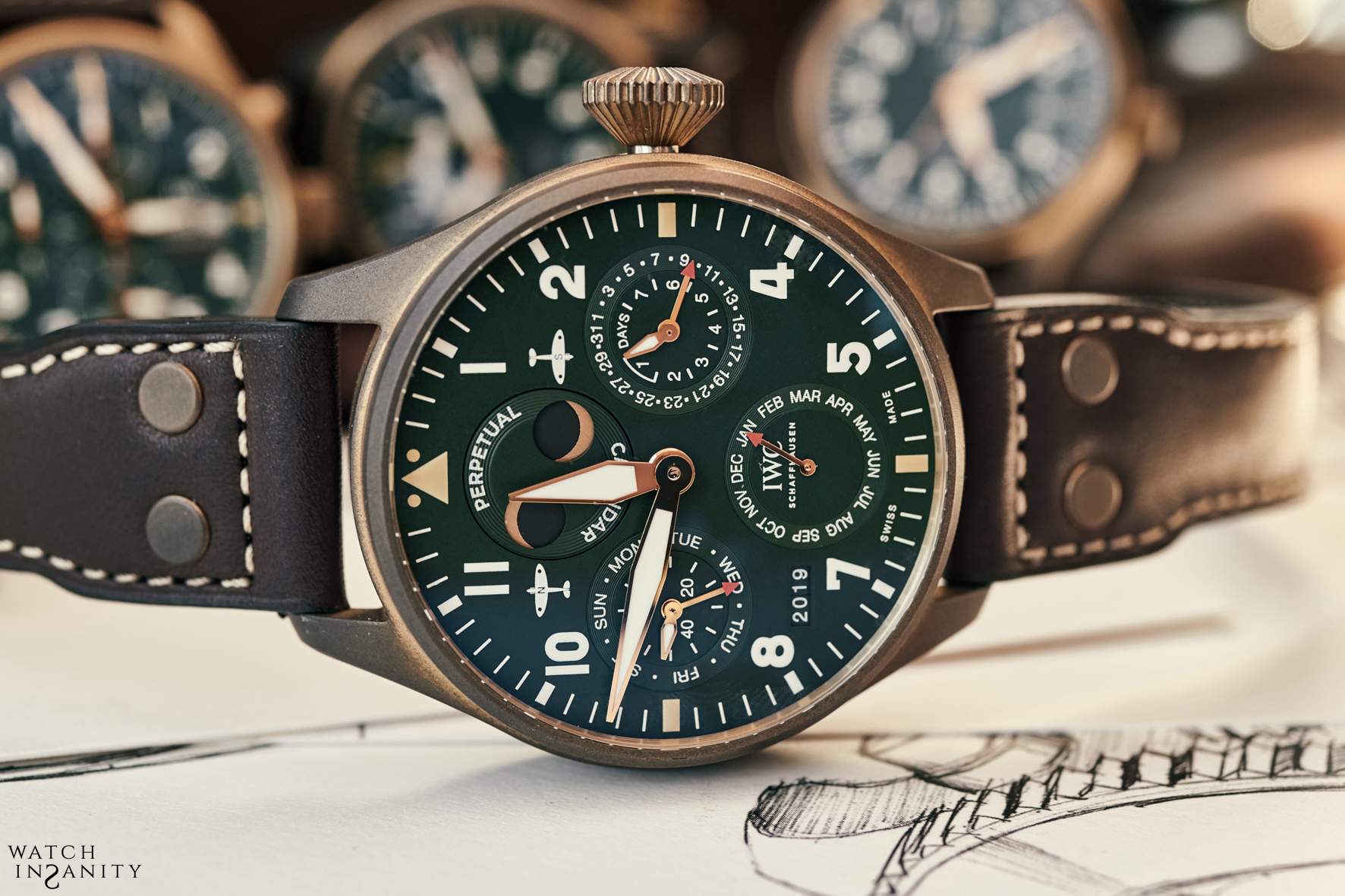
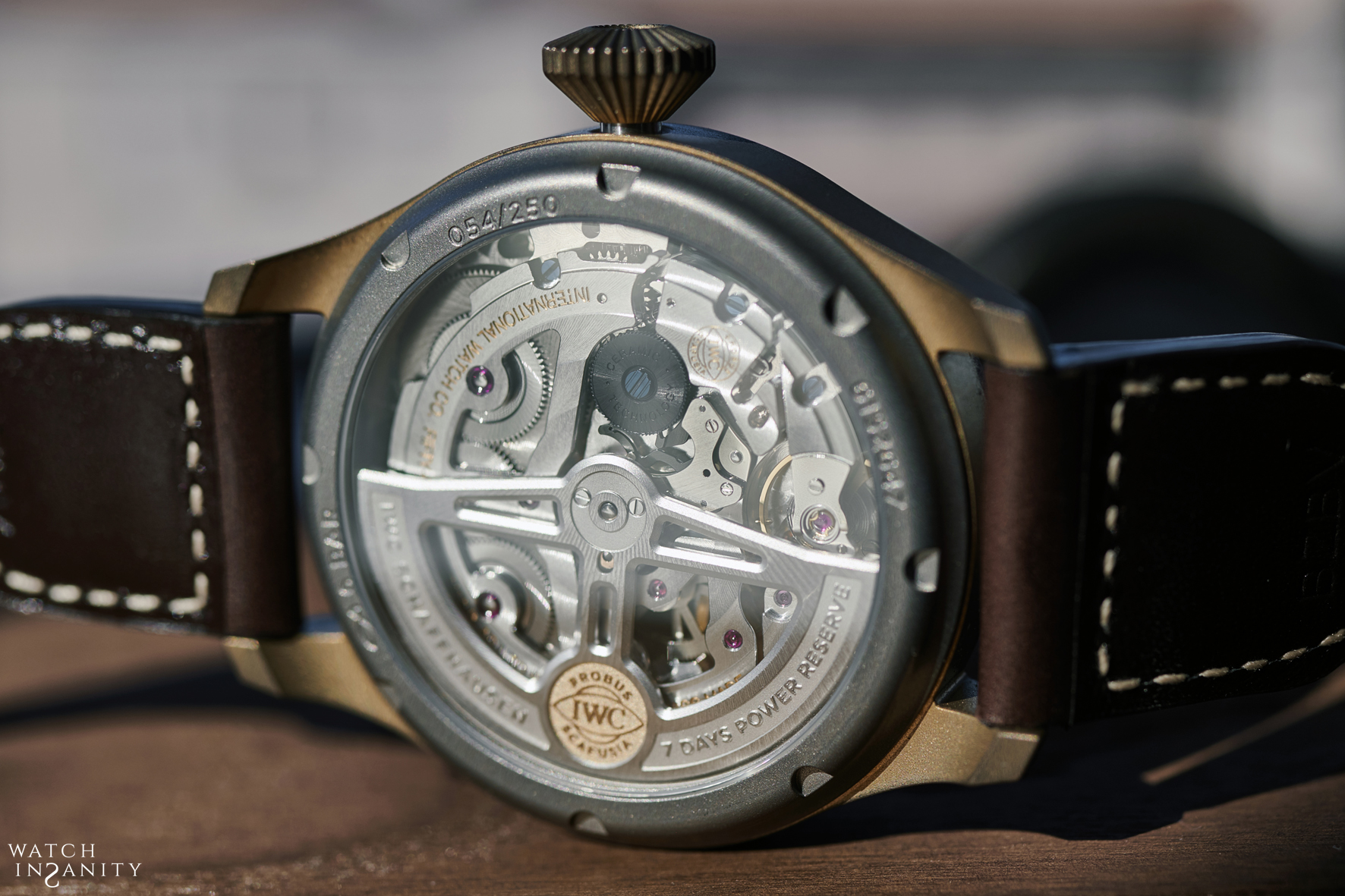
The Pilot’s Watch Timezoner Spitfire Edition “The Longest Flight” (Ref. IW395501) combines for the first time the patented Timezoner mechanism with an IWC-manufactured automatic movement, and is available in a limited edition of 250 pieces. Its case is made of stainless steel, the dial is black, the hands are rhodium-plated, and the strap is made of green fabric. This special edition is dedicated to the “Silver Spitfire – The Longest Flight” project by Steve Boultbee Brooks and Matt Jones – the world tour on a Spitfire aircraft mentioned above. The new IWC-manufactured 82760 calibre has a Pellaton winding system with wear-resistant ceramic components and a power reserve of 60 hours. (Price €.14.200)
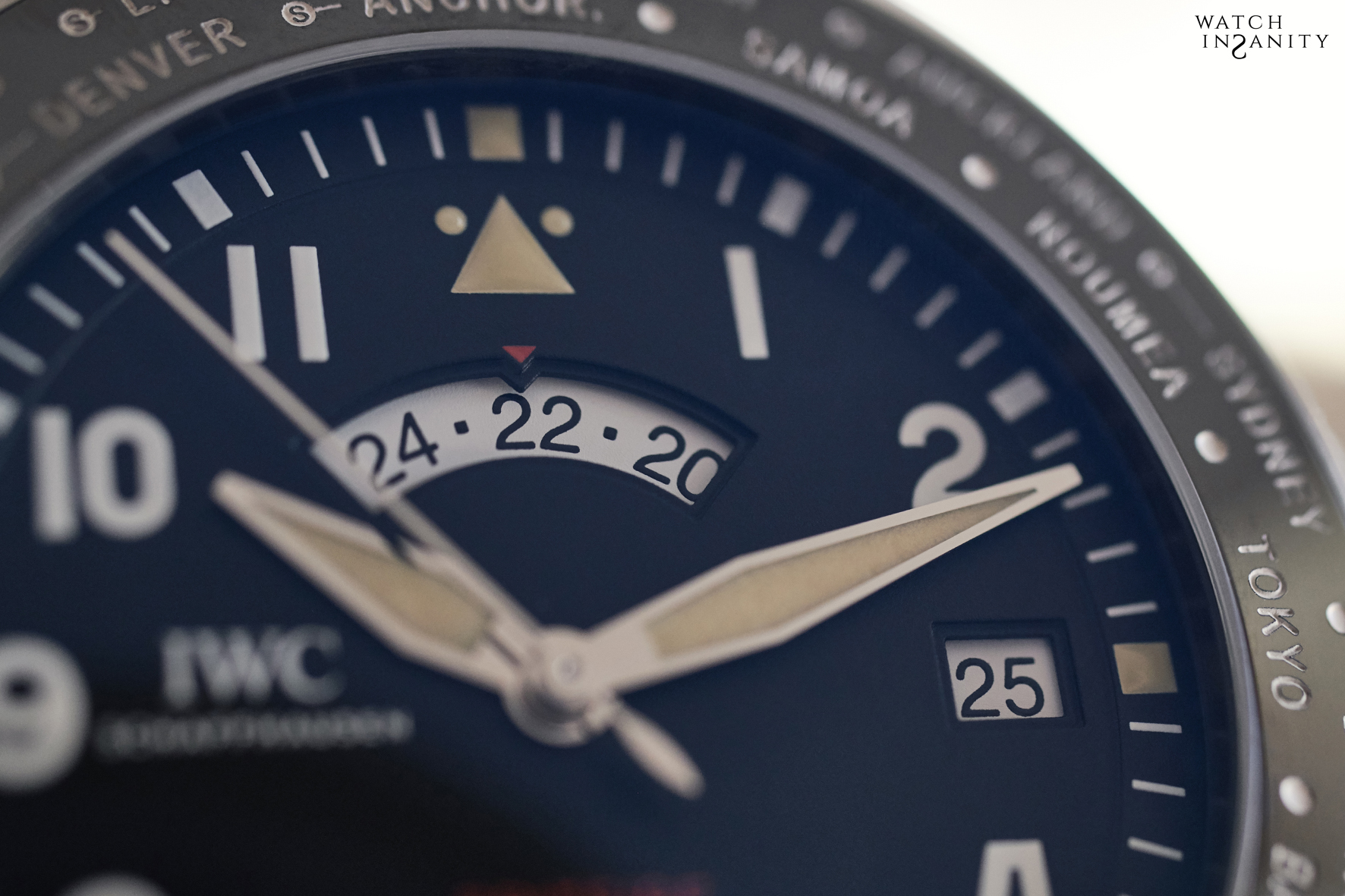
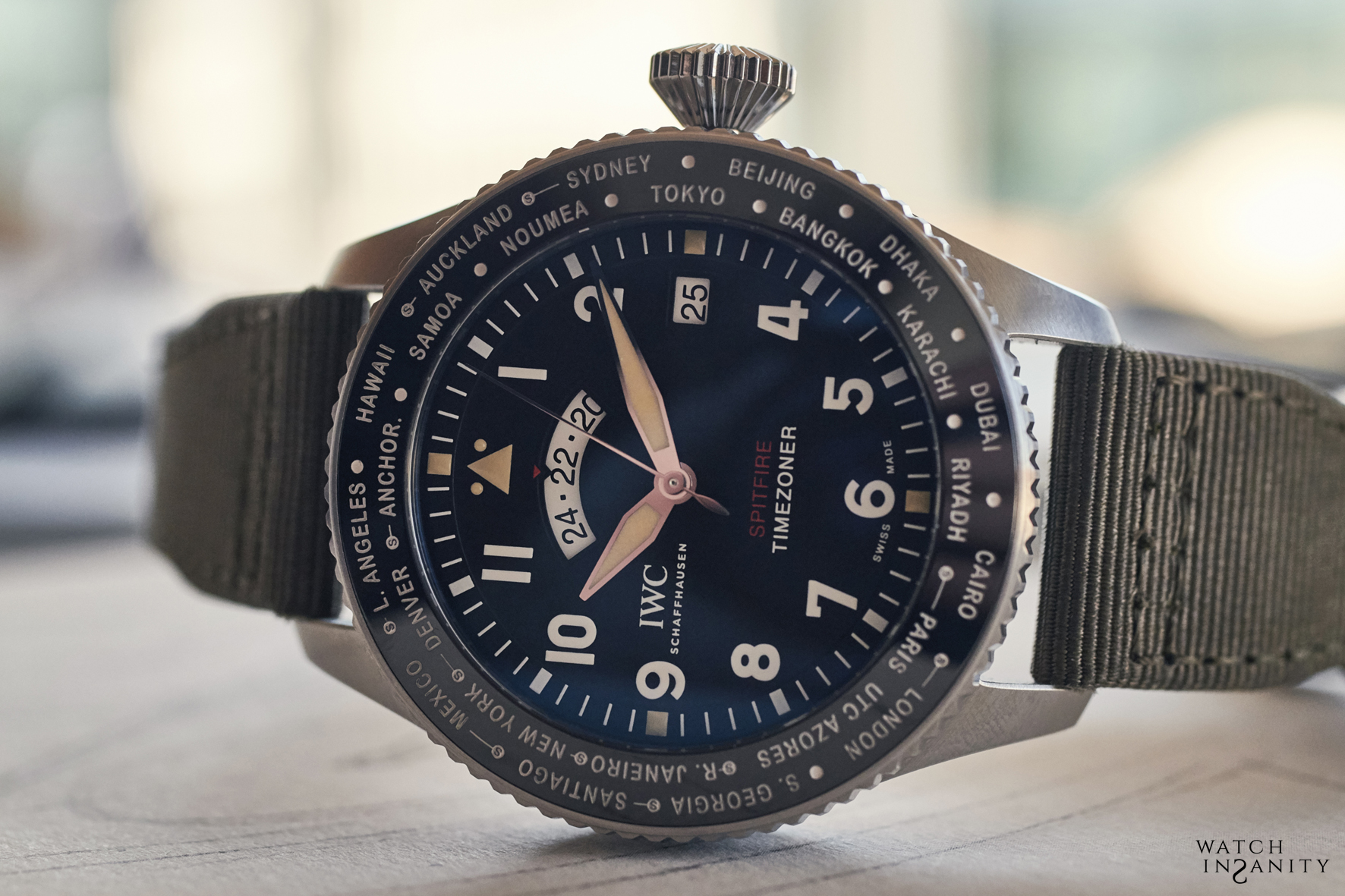
With the Pilot’s Watch UTC Spitfire Edition “MJ271” (Ref. IW327101), IWC is integrating the UTC (Coordinated Universal Time) function into an in-house calibre for the first time. The model with a bronze case, an olive green dial, golden hands and a brown calfskin strap is available in a limited edition of 271 pieces.
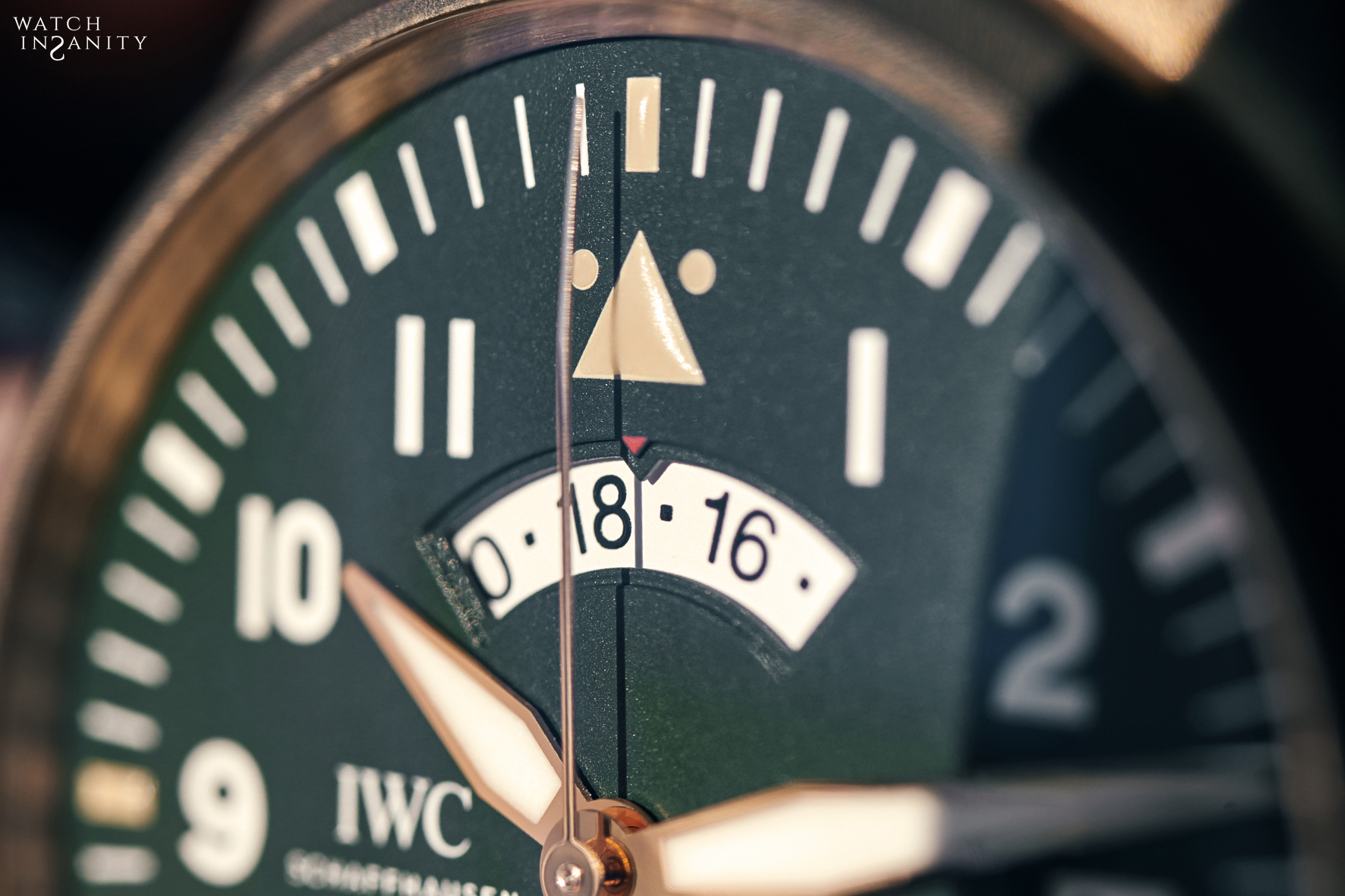
The UTC function, used in aviation for communication and navigation purposes, facilitates the setting of a second time zone. When the crown is rotated in the central position, the hours hand moves forward or backwards in one-hour increments. If the International Date Change Line is crossed, the date changes automatically. The time in the country of origin can be read through the curved UTC display in the upper half of the dial. The in-house 82710 calibre has a Pellaton winding system with ceramic components, and a 60-hour power reserve. (Price €.10.200)
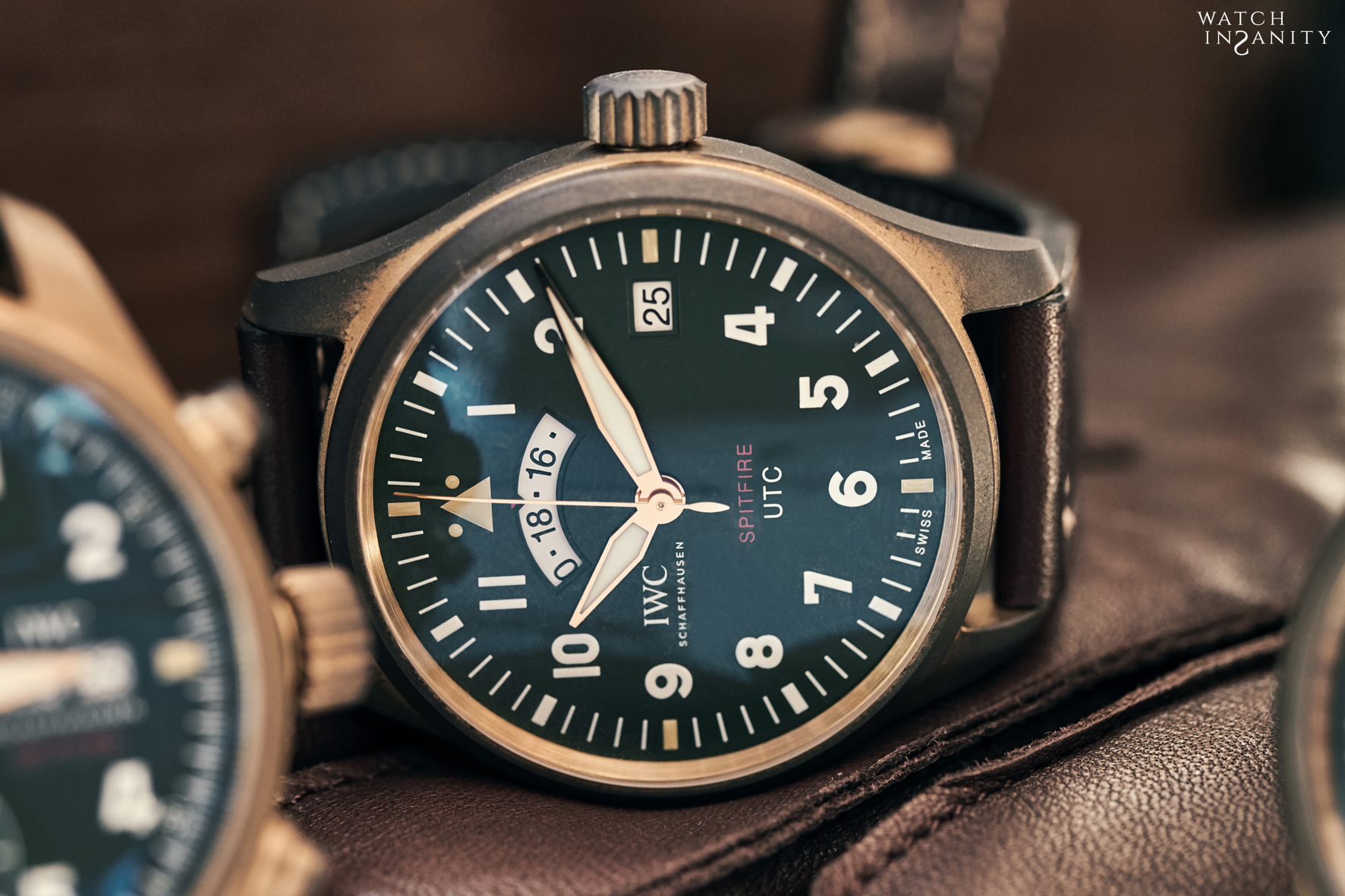
For the Pilot’s Watch Chronograph Spitfire (Ref. IW387901 and IW387902), IWC introduces a 69000-calibre family chronograph movement integrated into the Pilot’s Watches.
The two models (Ref. IW387901 and IW387902) have a stainless steel or bronze case, a black or olive green dial, rhodium-plated or gold-plated hands, and a green fabric or brown calfskin strap, respectively.
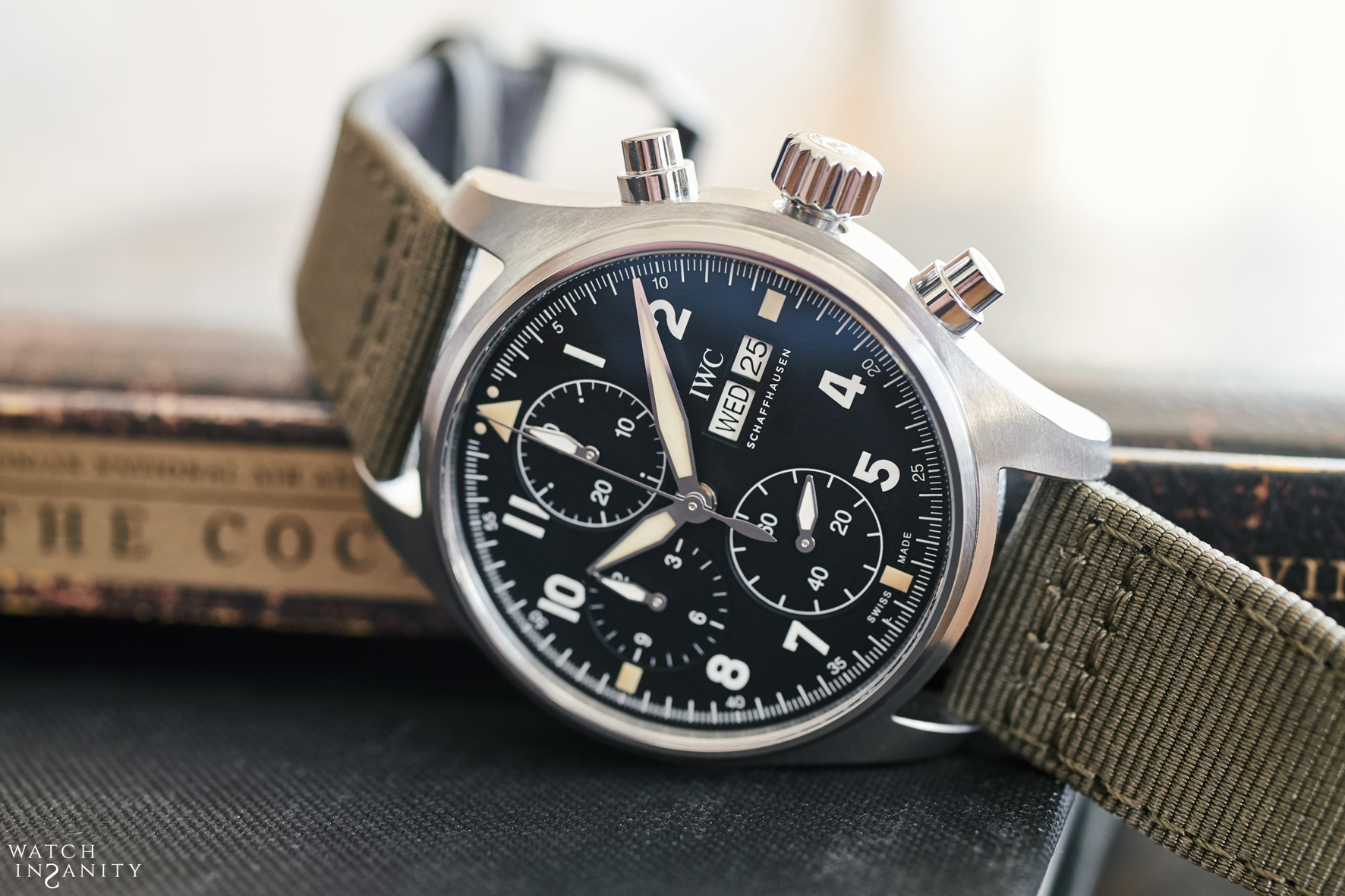
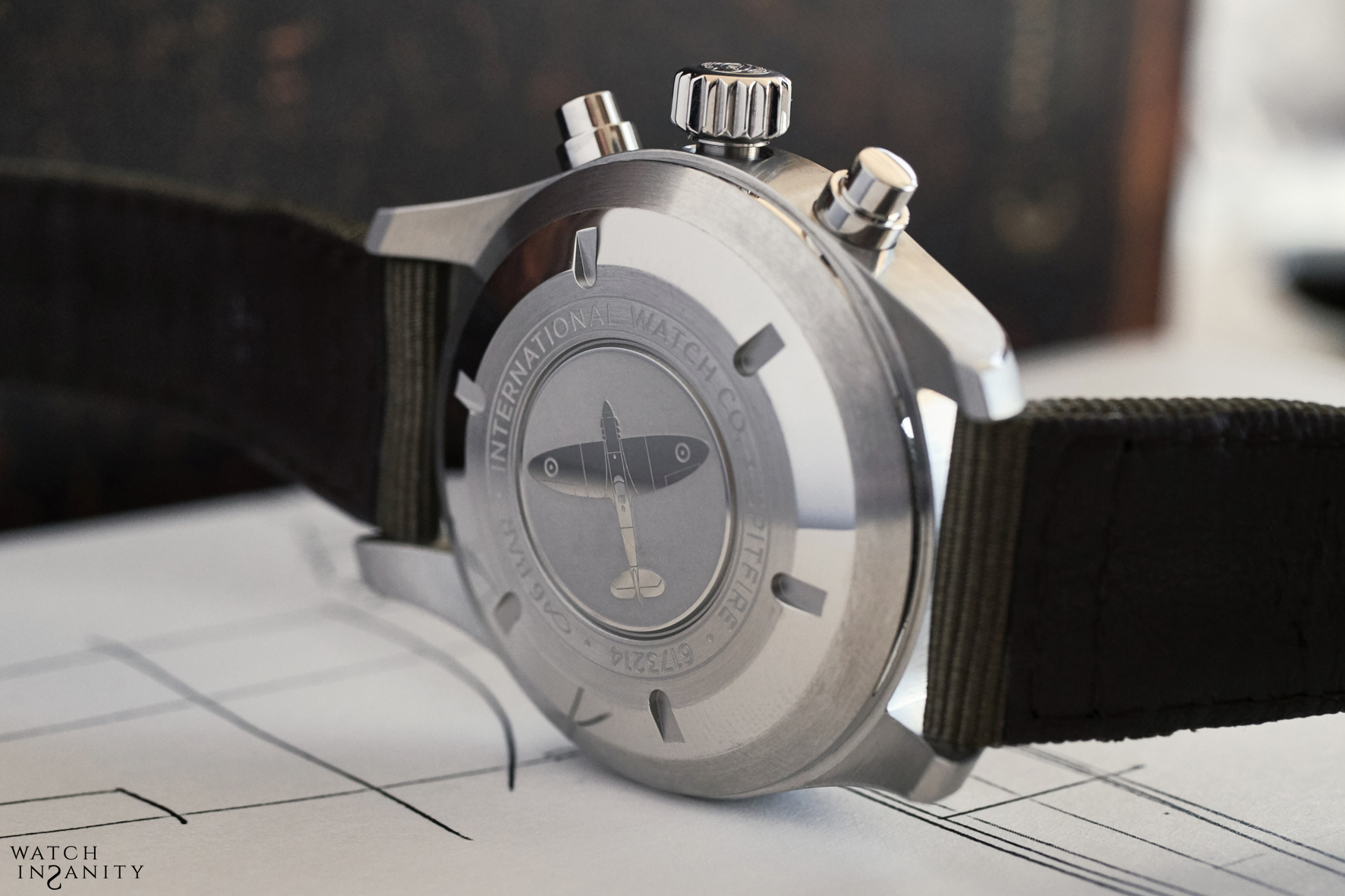
IWC presents its first Pilot’s Chronograph including a movement from the 69000-calibre family, and a smaller case – just 41 millimetres in diameter. This family of calibres, first unveiled in 2016, is one of the most important developments in the recent history of the brand among the IWC-manufactured movements. The in-house 69380 calibre is a robust chronograph movement with a classic column-wheel design. It displays the hours and minutes measured on two auxiliary dials at “9 o’clock” and “12 o’clock.” The ratchet winding system, which recharges on both sides, ensures an autonomy of 46 hours. A soft iron inner cage protects the movement from magnetic fields. (Price €.7.100 in bronze / €.6.450 in steel)
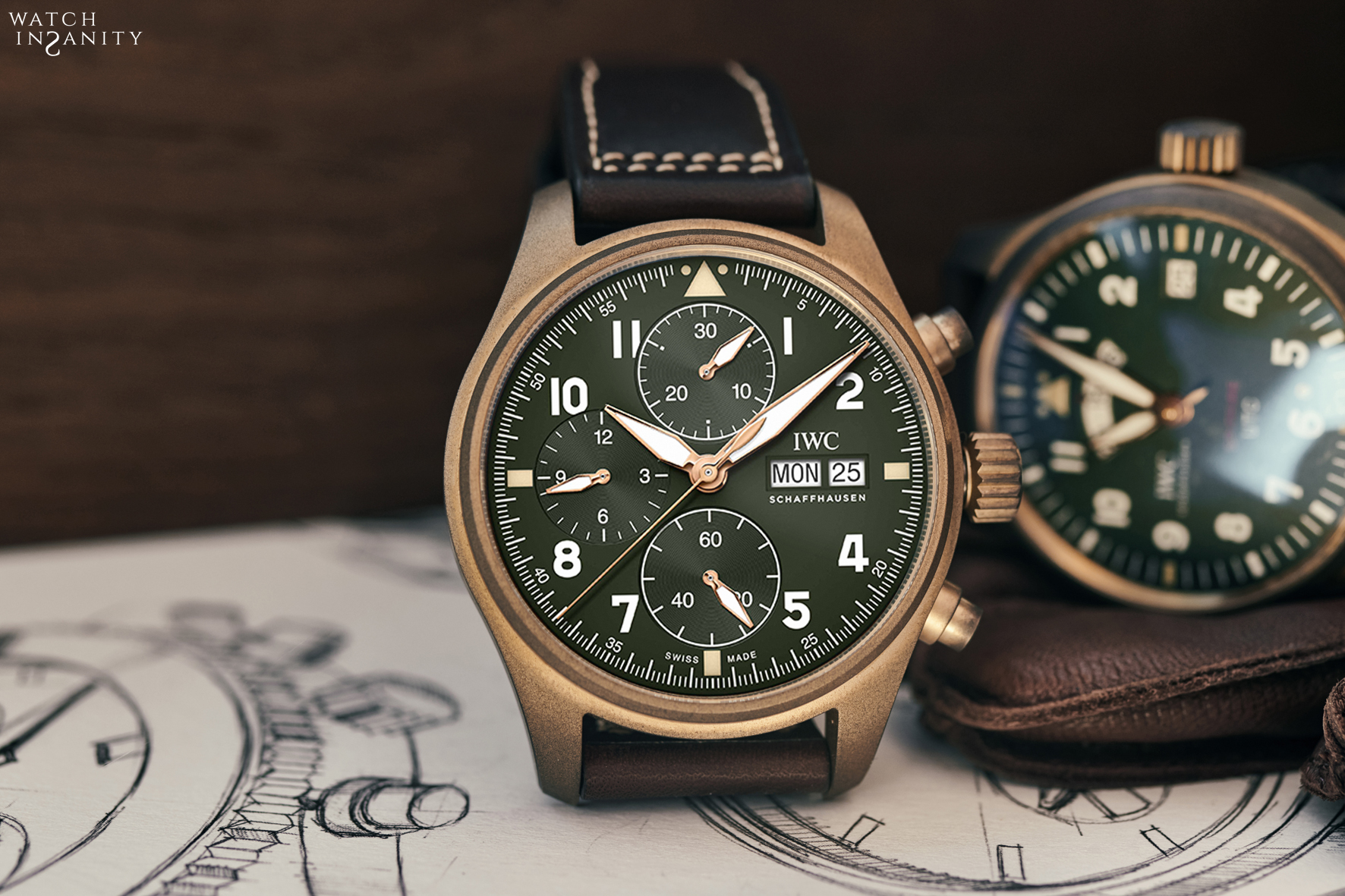
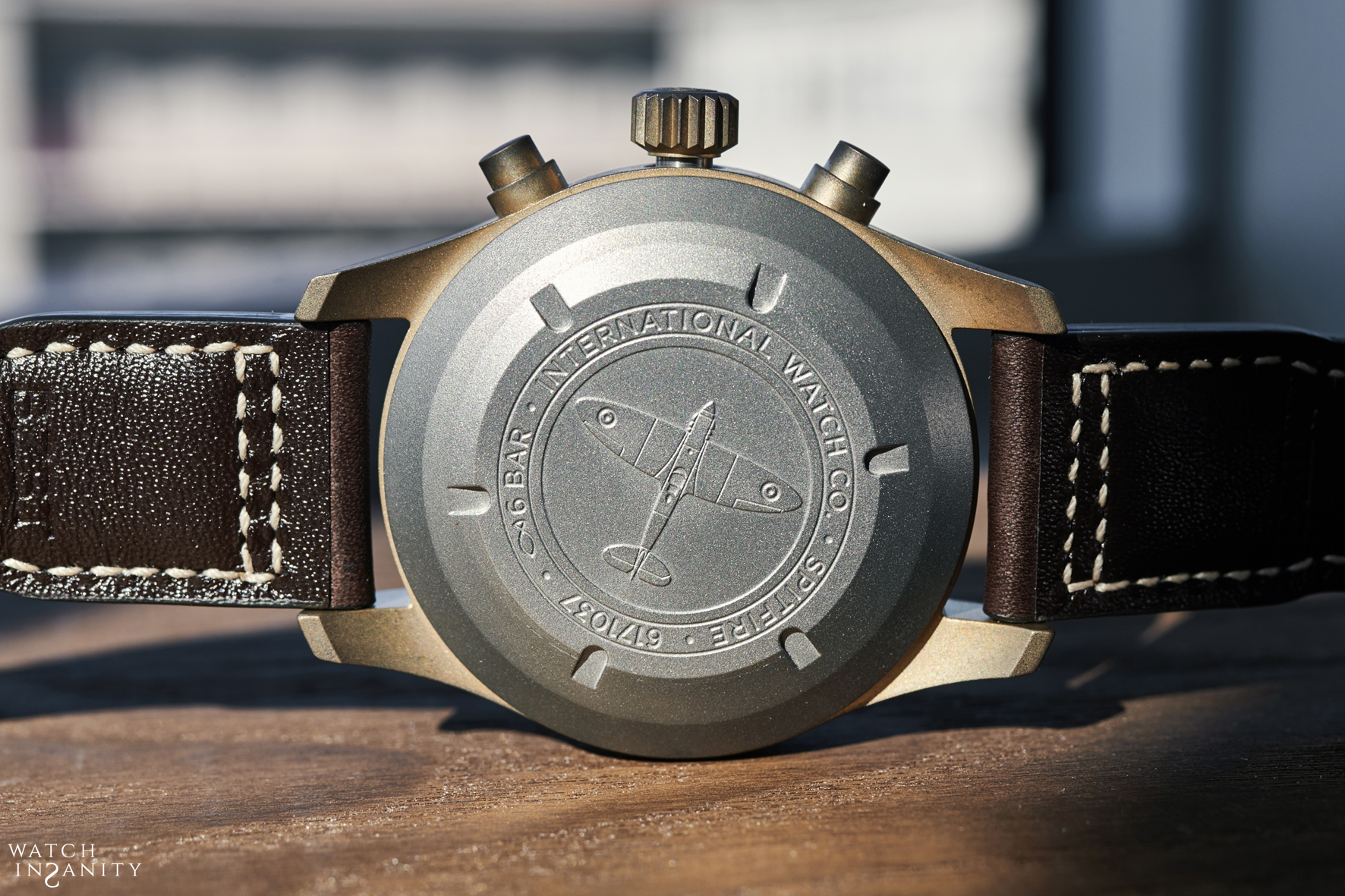
Finally, for the Pilot’s Watch Automatic Spitfire, IWC is incorporating – for the first time in its Pilot’s Watches an IWC-manufactured movement from the 32000 calibre family – the IWC calibre 32110, which makes its debut on this timepiece. The automatic movement features a ratchet winding system that rewinds on both sides and guarantees an autonomy of 72 hours. The watch has a diameter of 39 millimetres.

The two references (Ref. IW326801 and IW326802) have a stainless steel or bronze case, a black or olive green dial, rhodium-plated or gold-plated hands, and a green fabric or brown calfskin strap, respectively. (Price €.5.600 in bronze / €.4.960 in steel)
By Valeria Garavaglia
